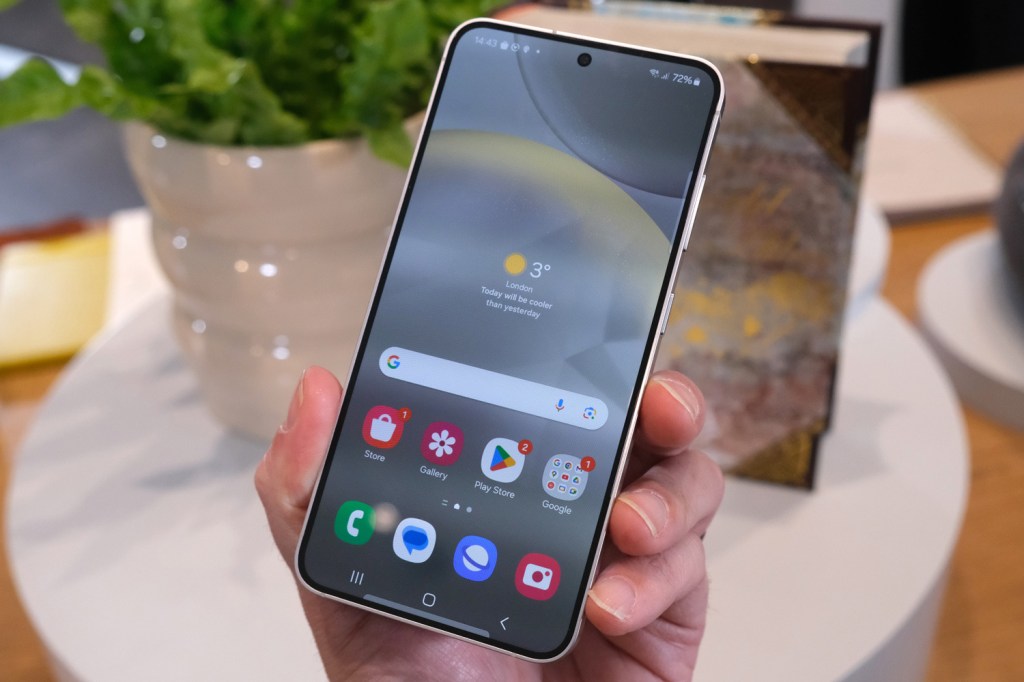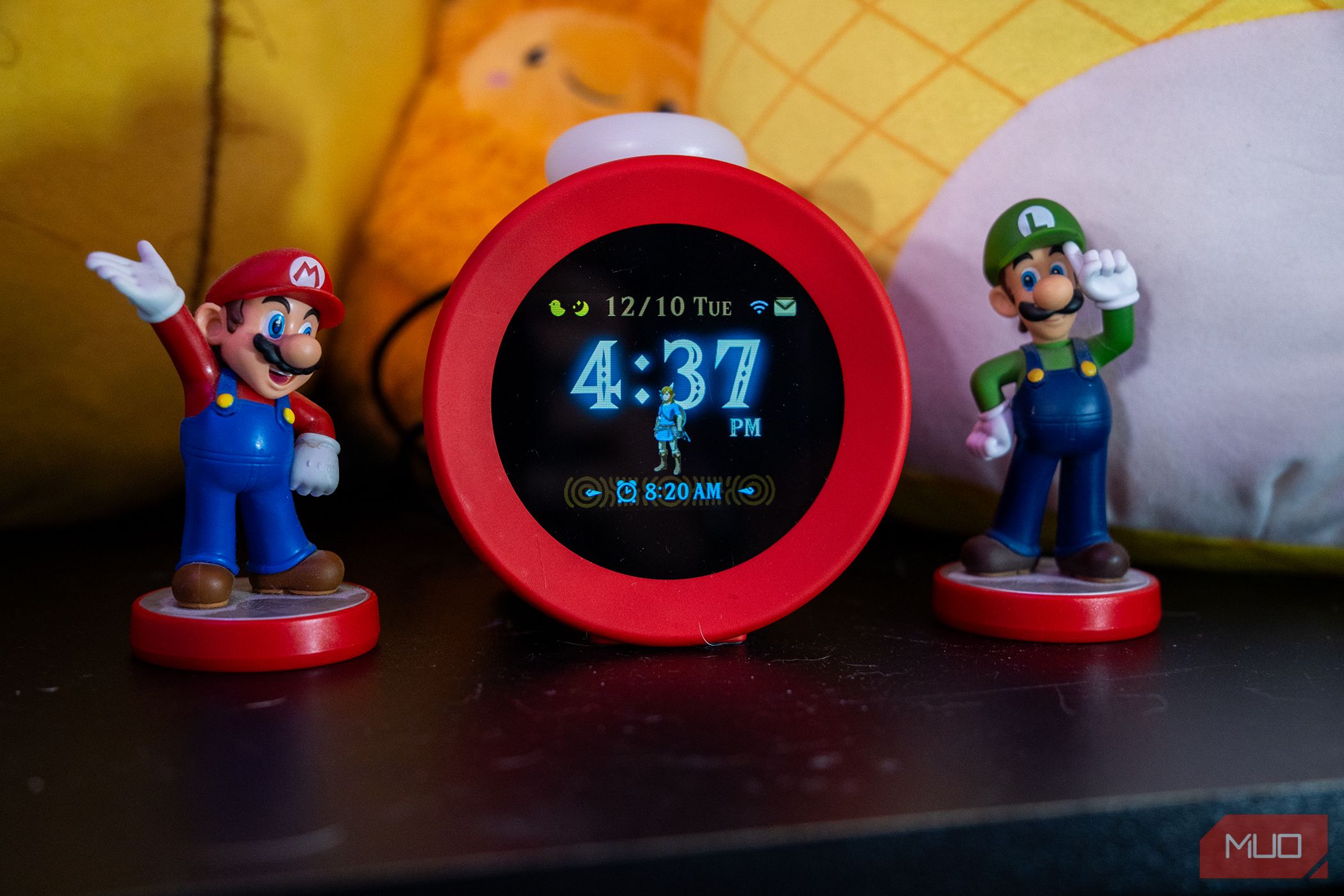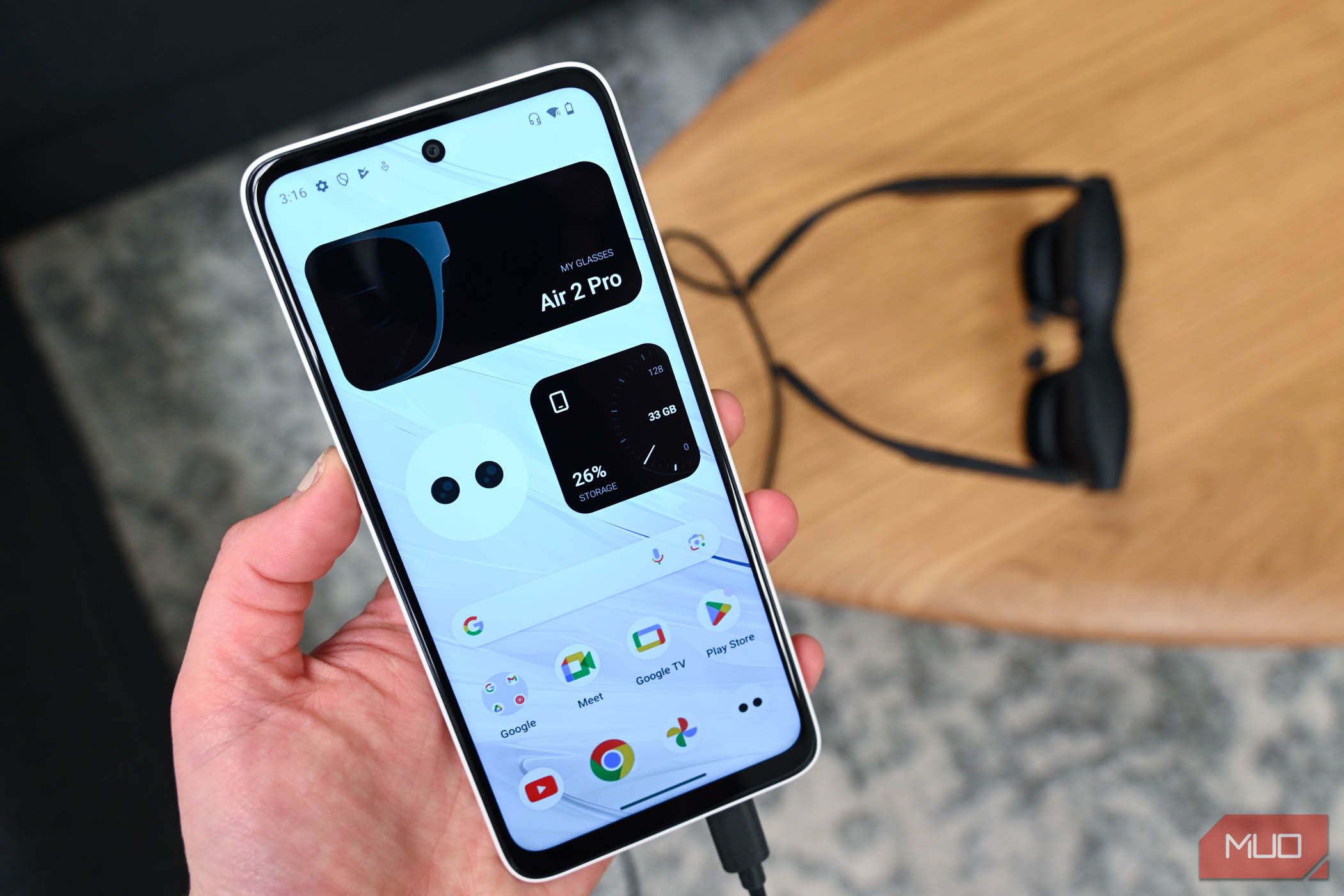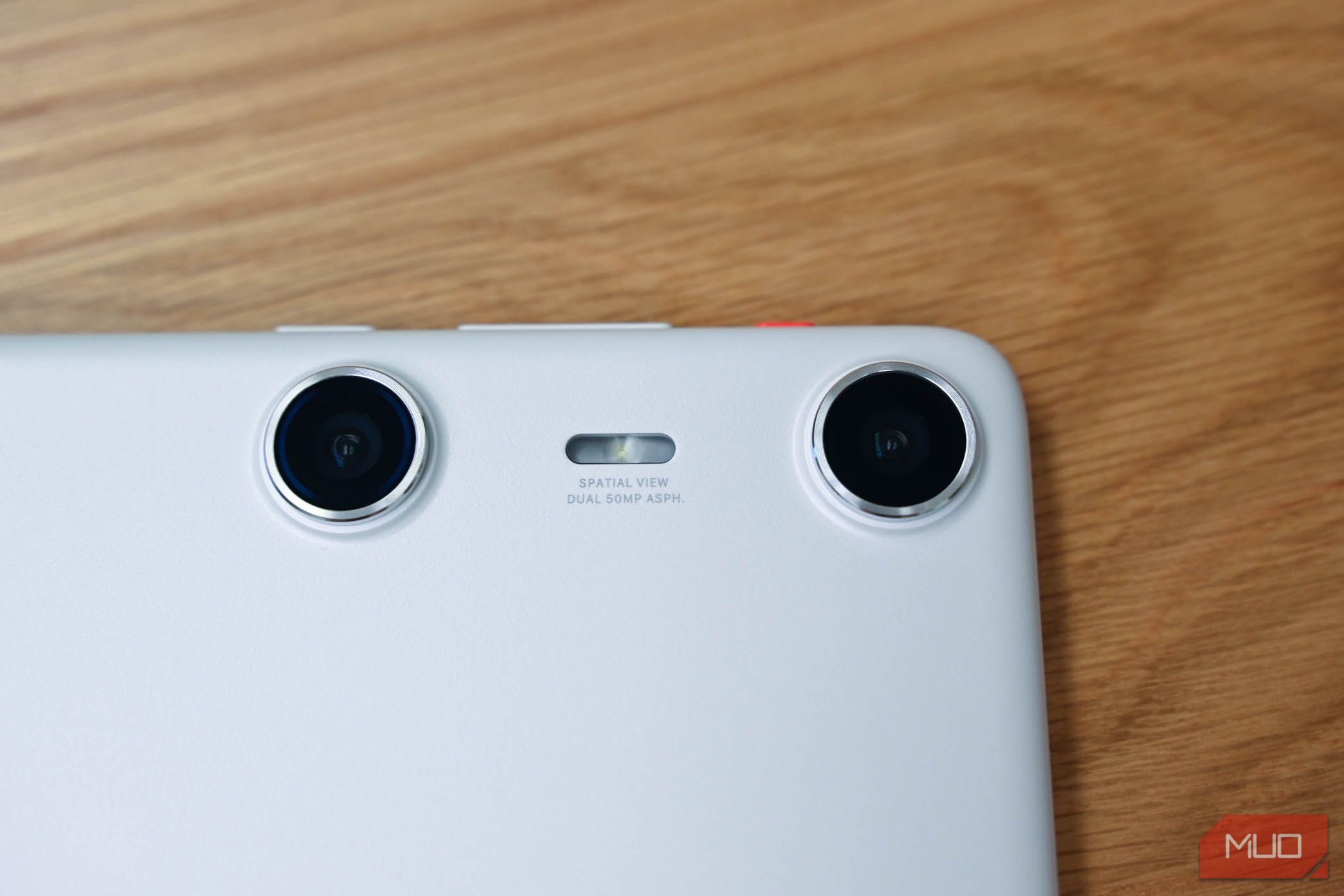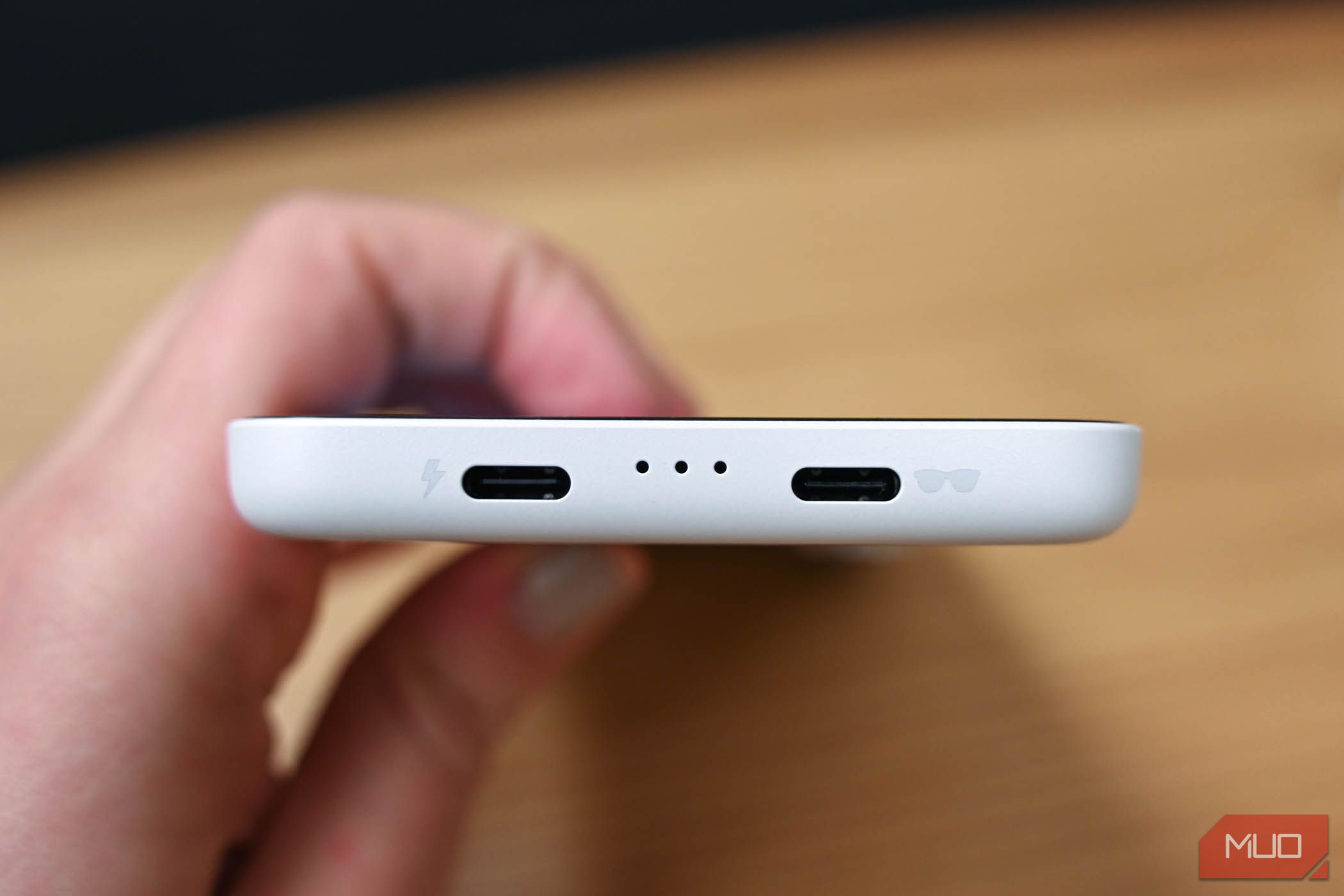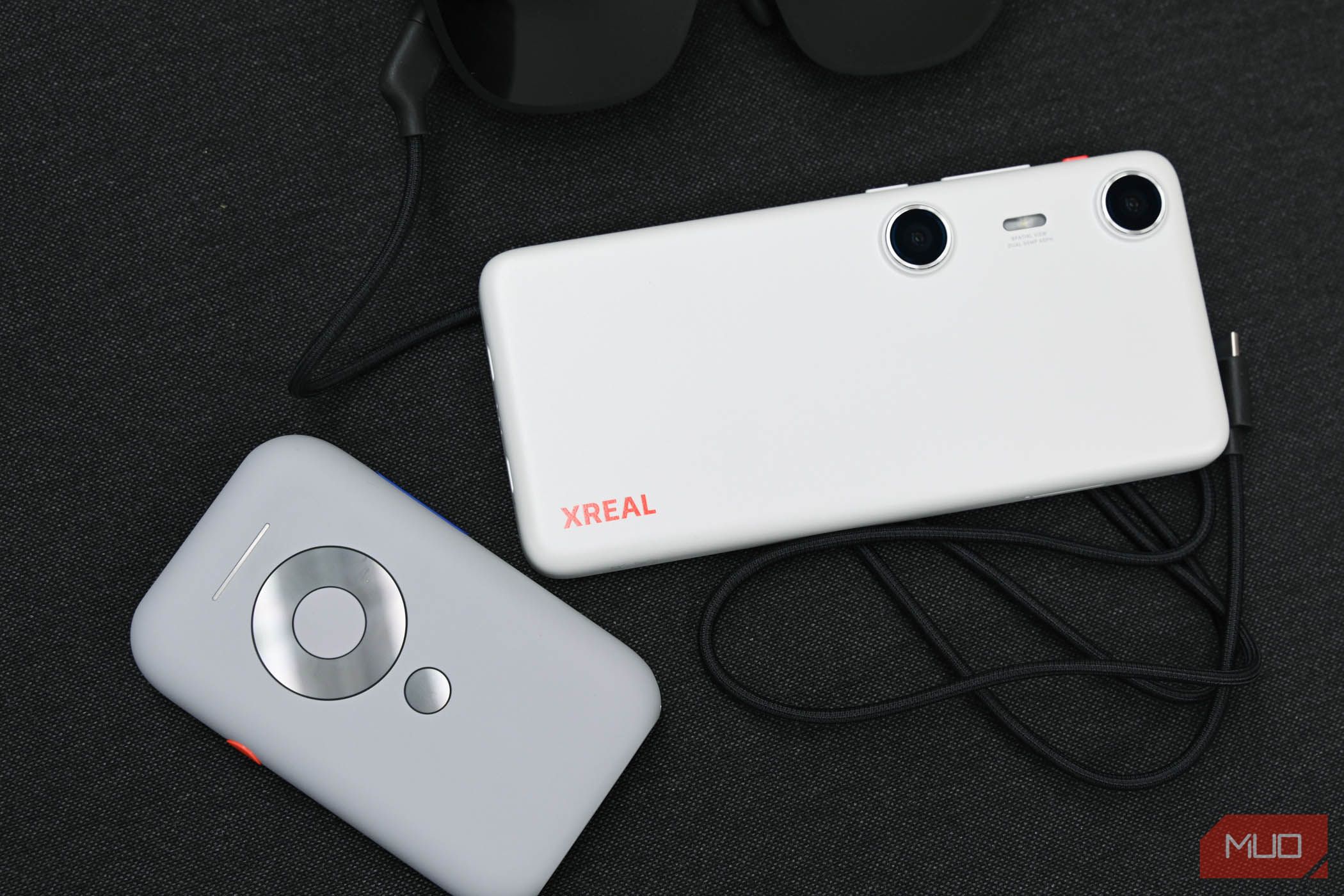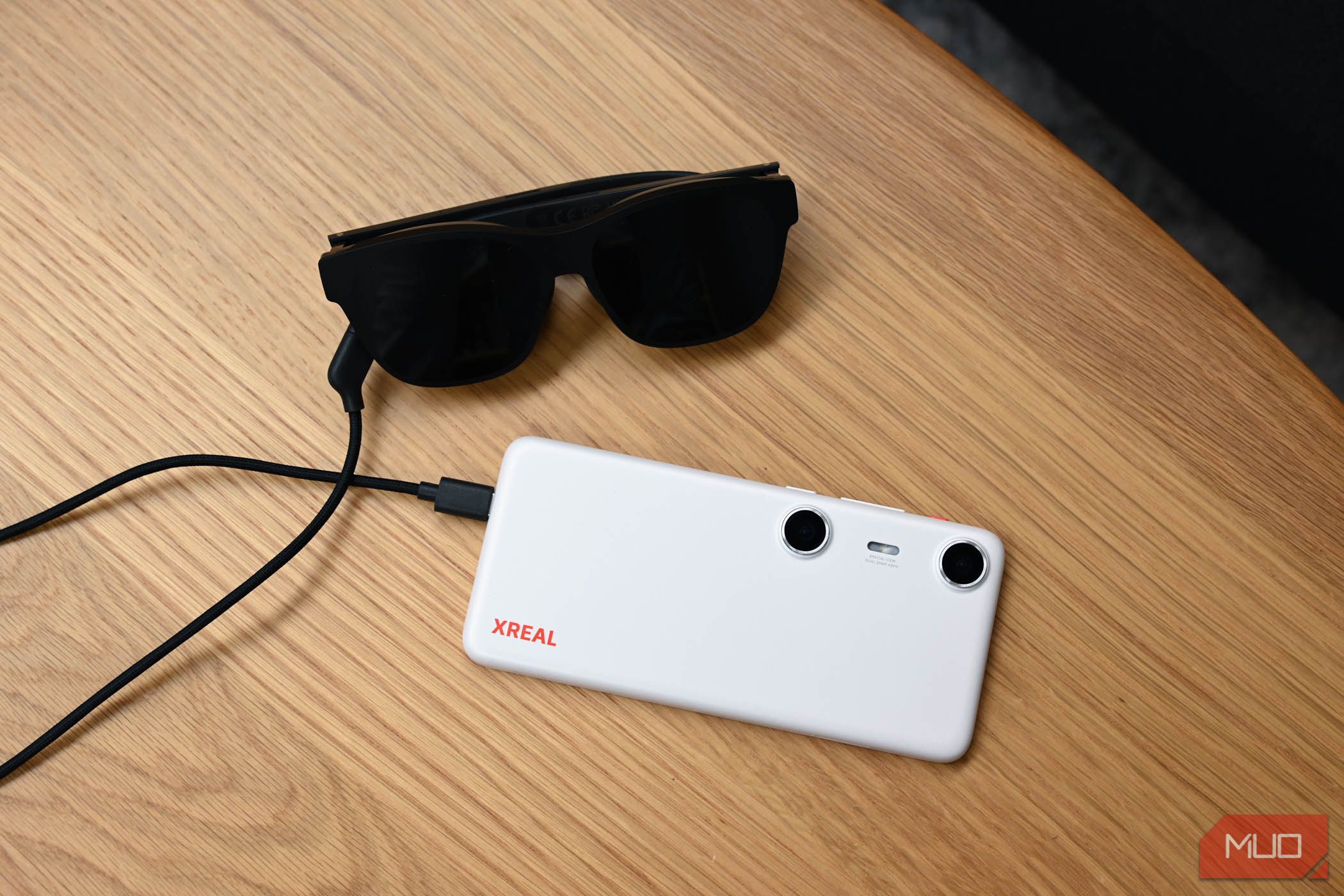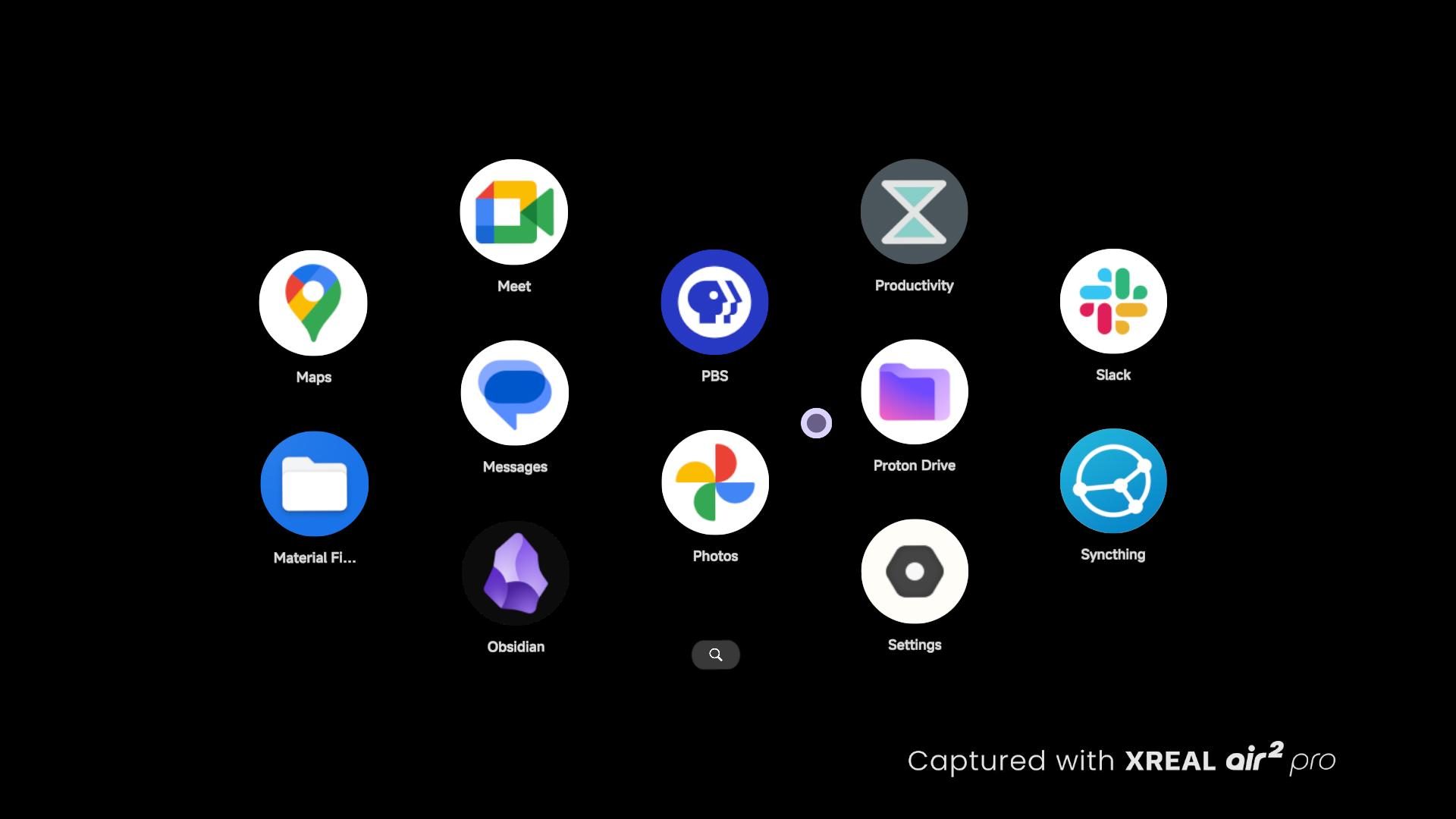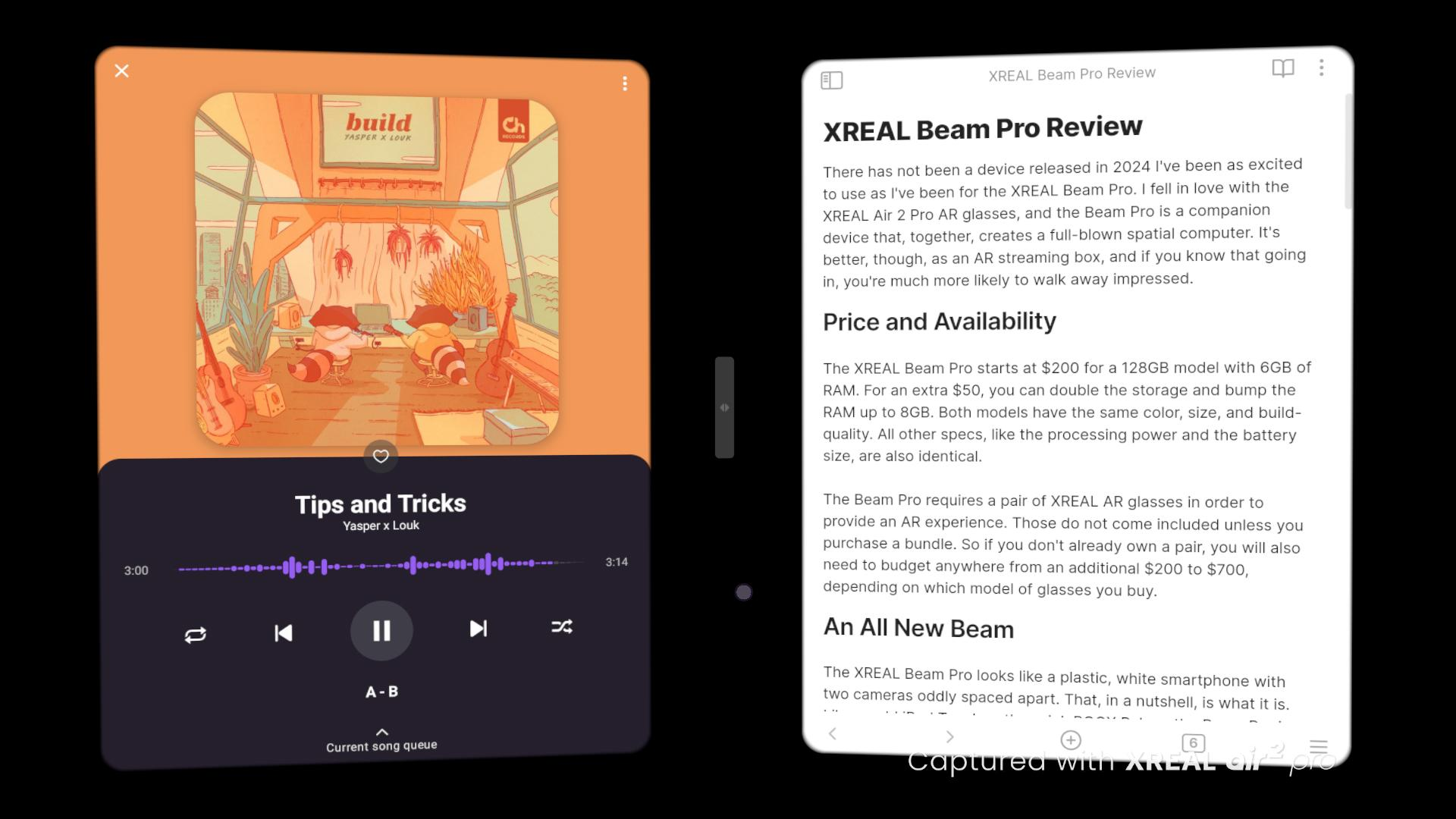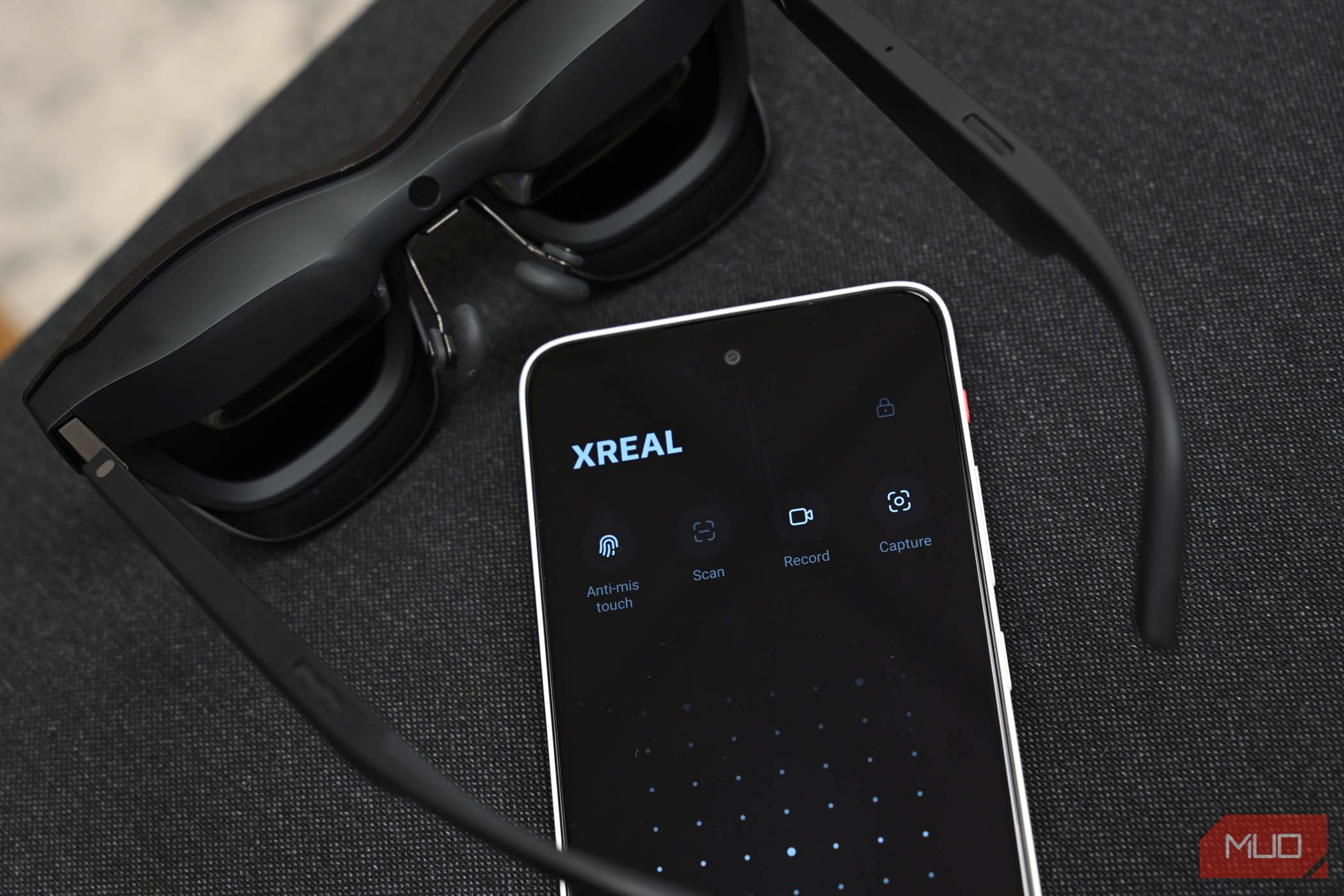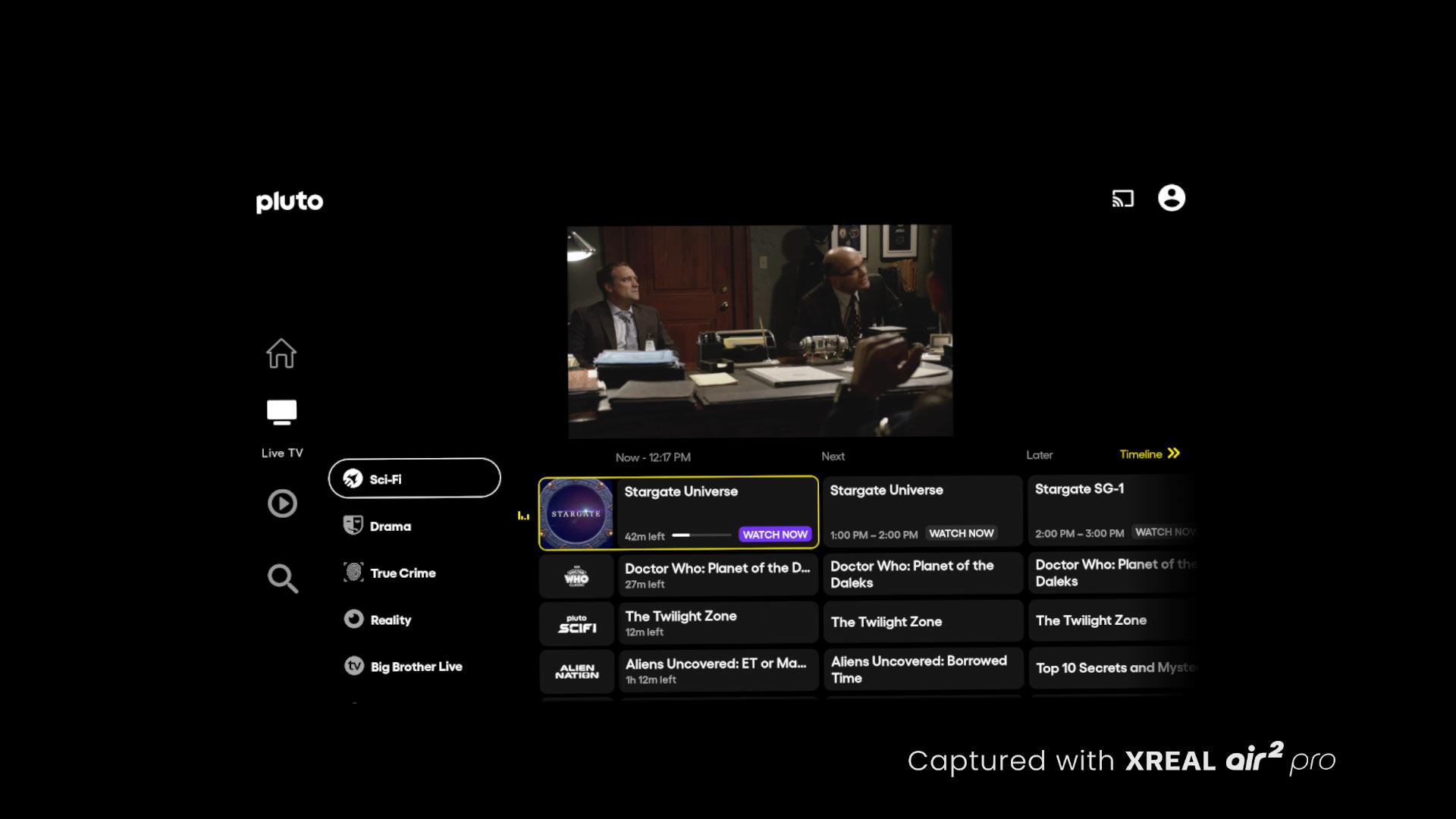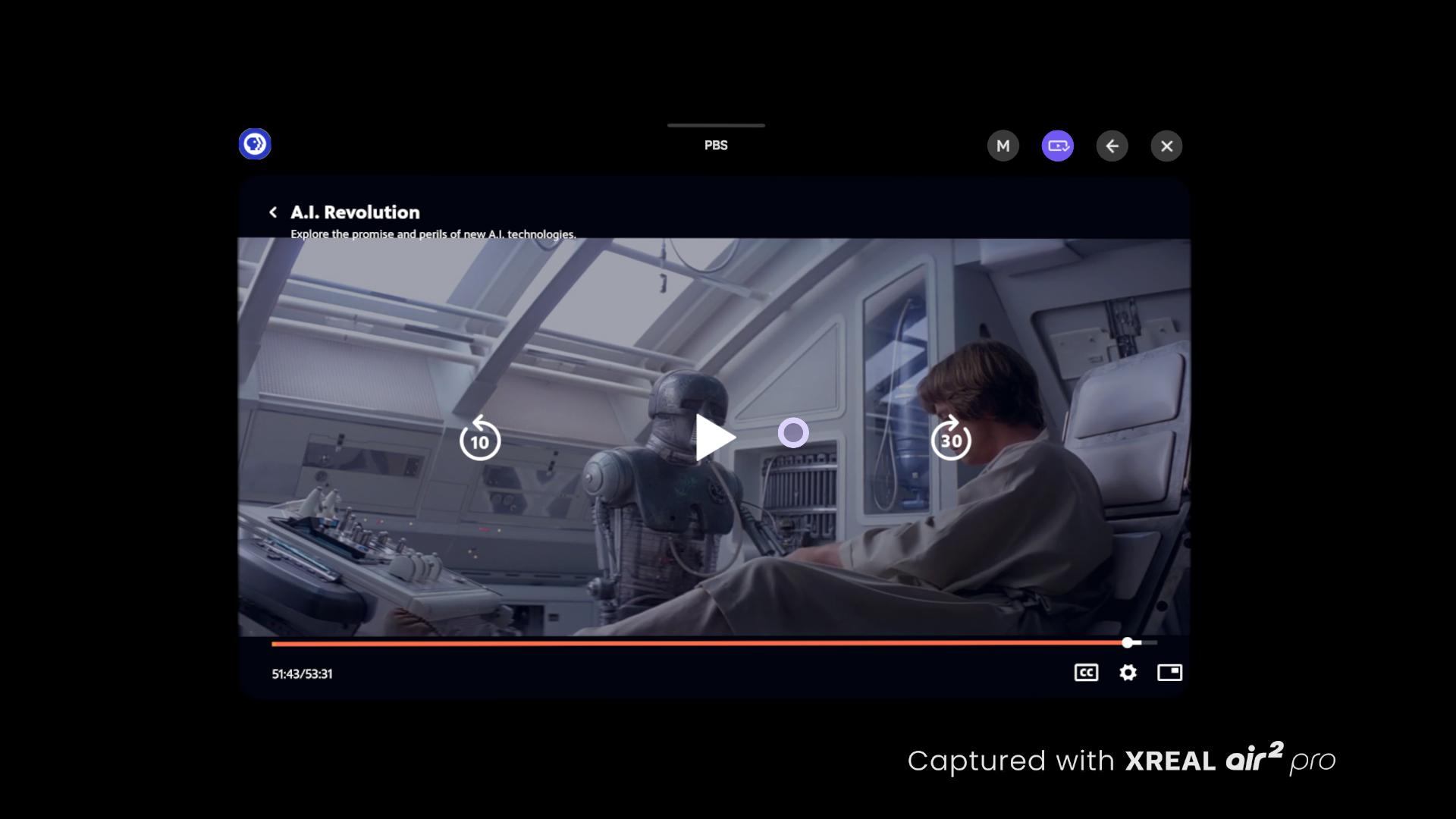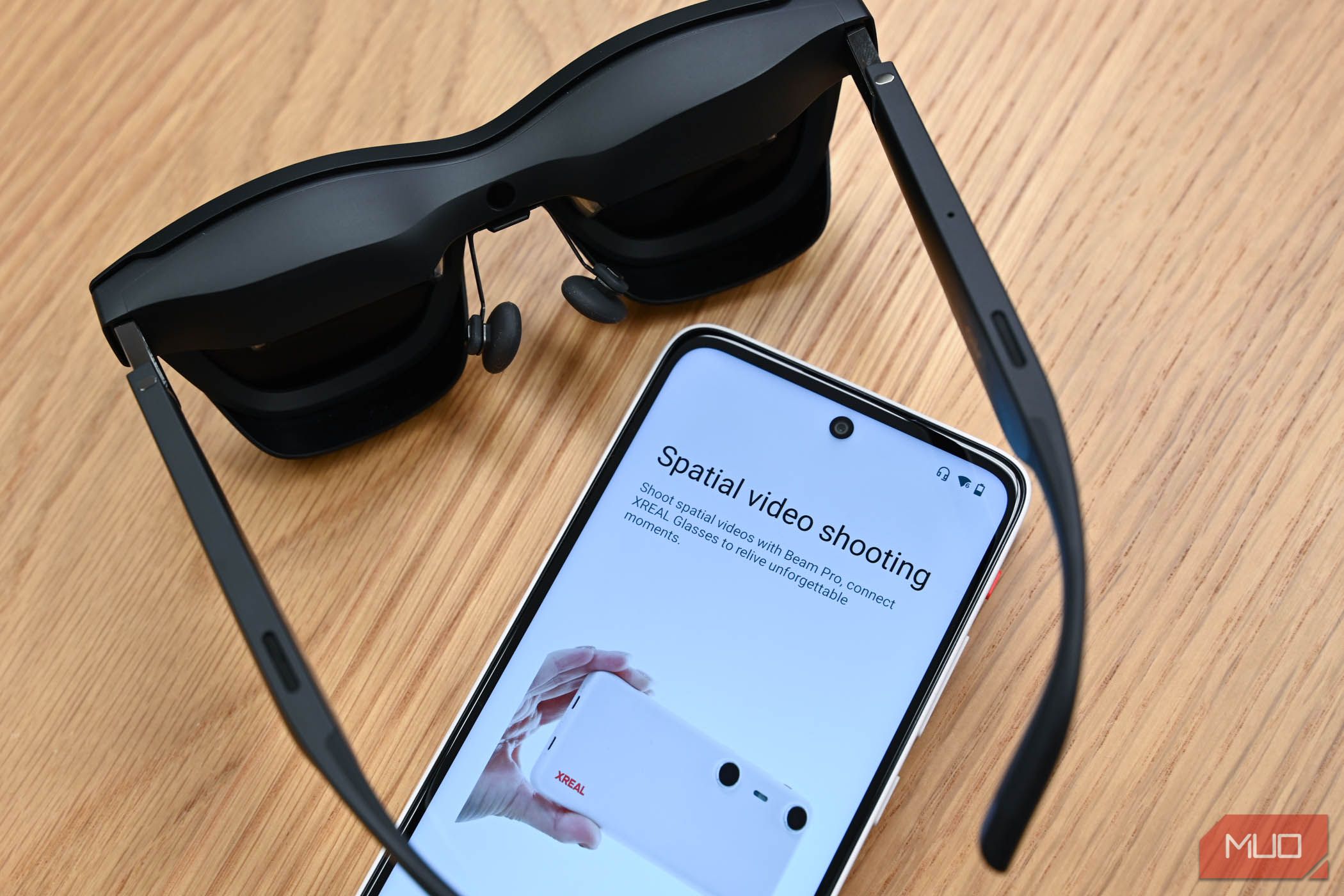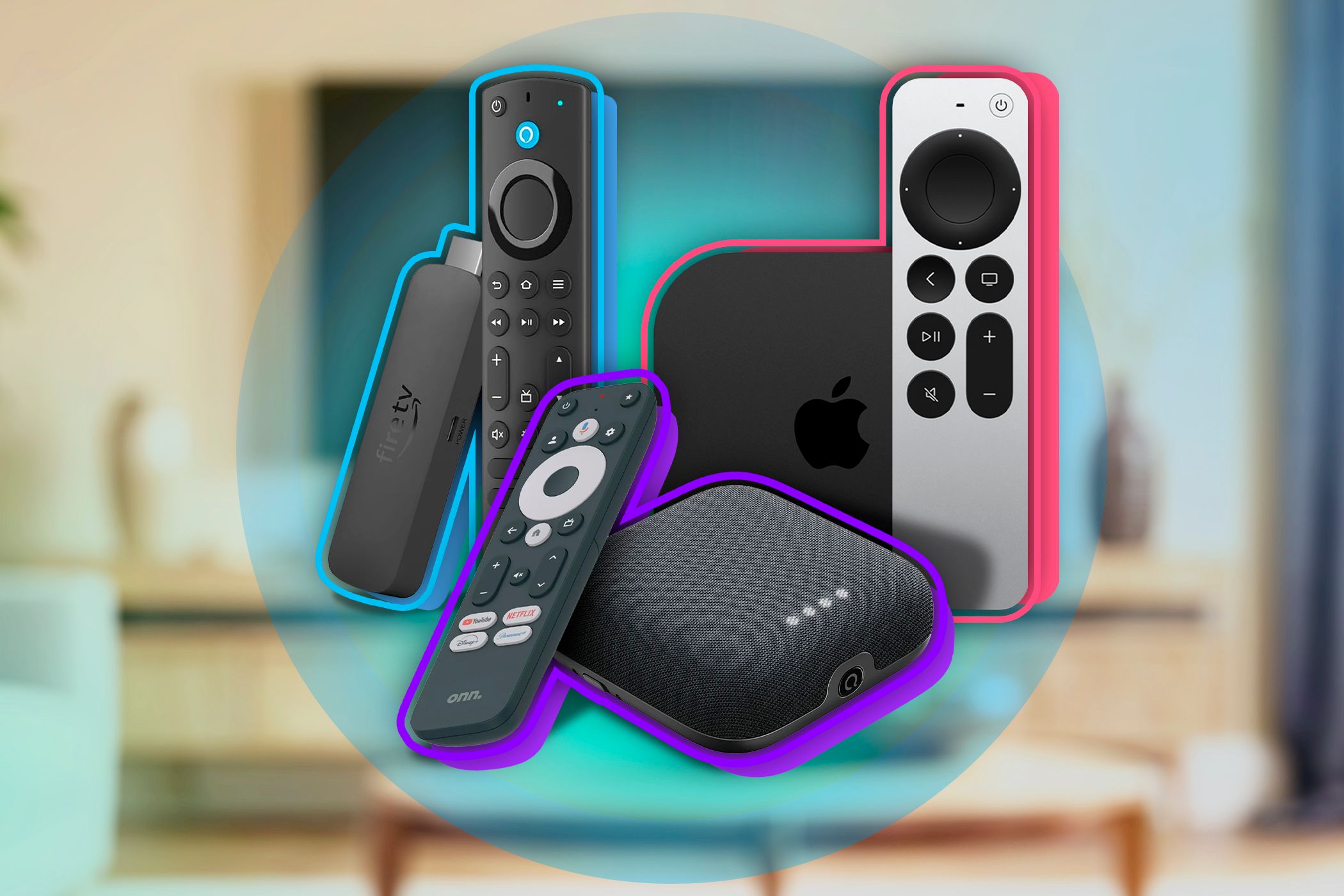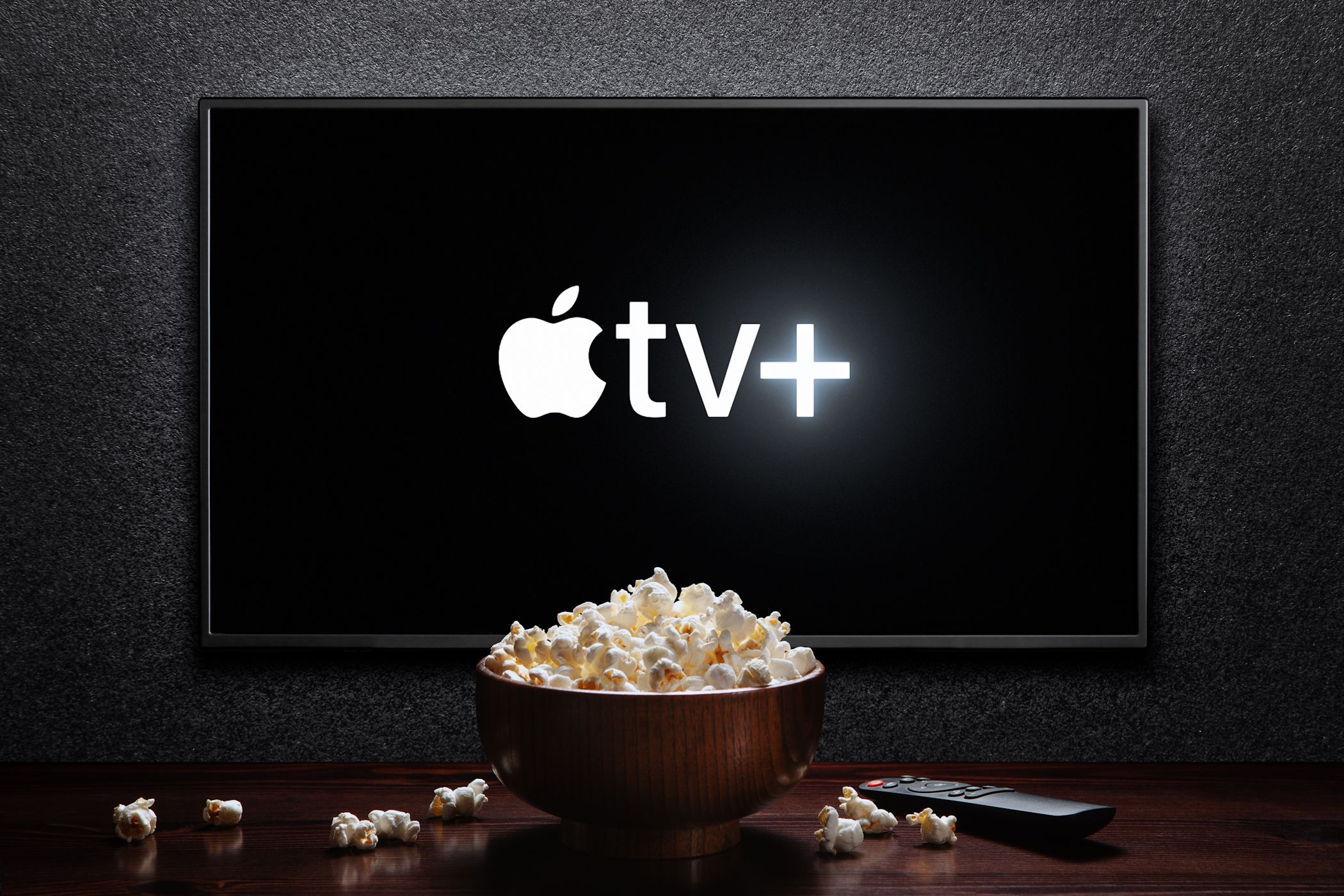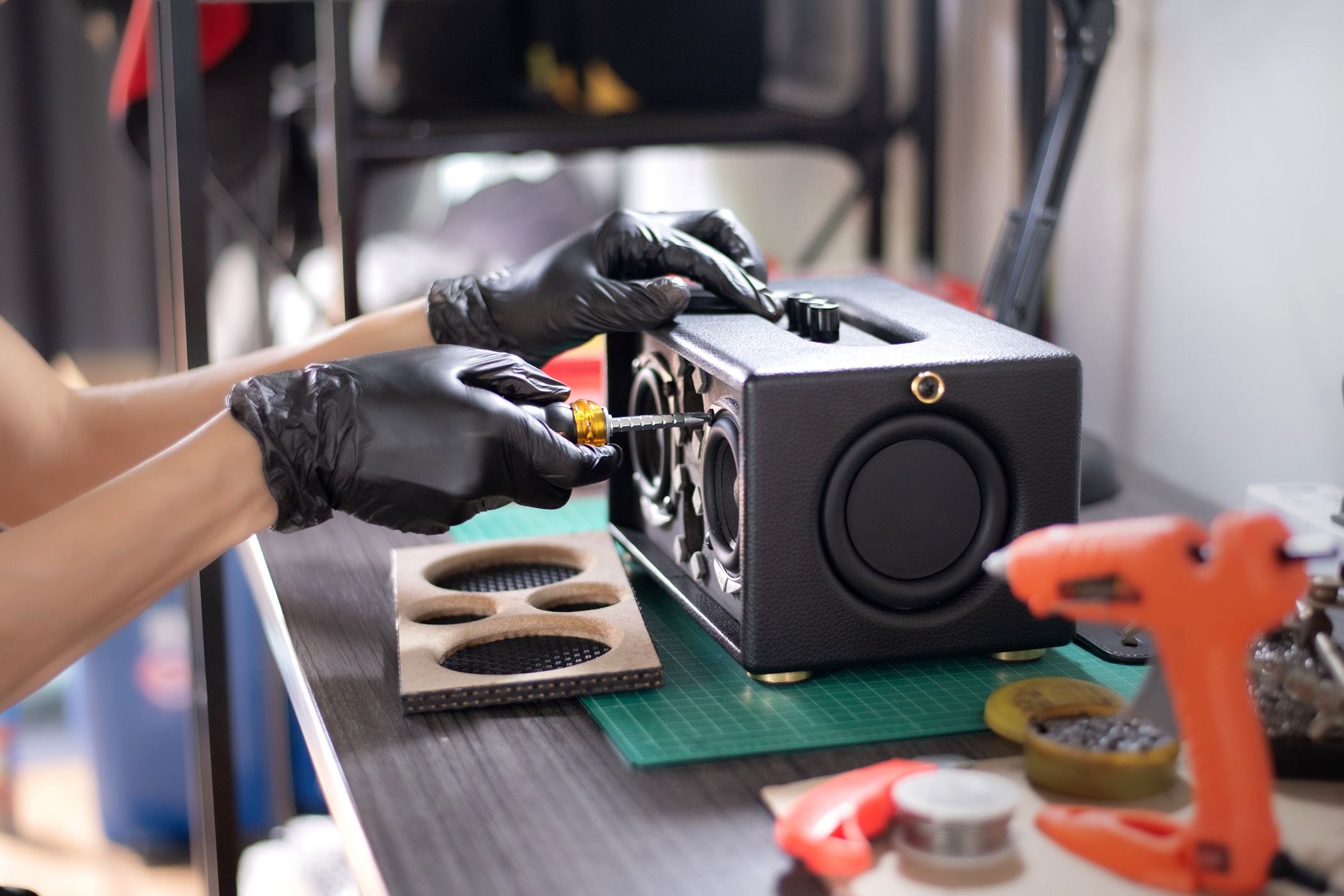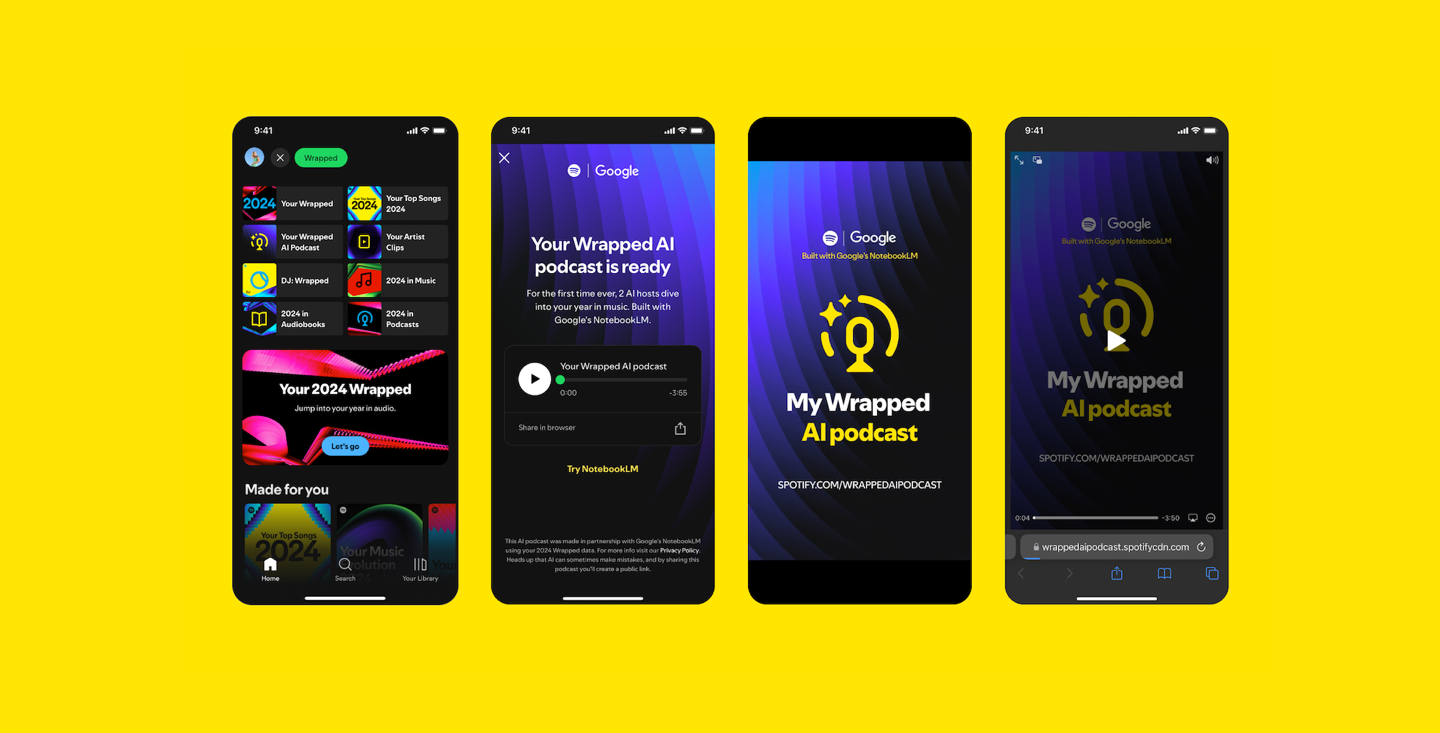Key Takeaways
- The XREAL Beam Pro, when used in conjunction with AR glasses, offers an excellent media streaming experience.
- The Beam Pro’s specs are equivalent to those of a $200 Android phone, limiting processing power and the number of apps you can run at once.
- This is an affordable way to experience AR, but don’t expect this spatial computer to serve as a full PC replacement.
There has not been a device released in 2024 that I’ve been as excited about as the XREAL Beam Pro. I fell in love with the XREAL Air 2 Pro AR glasses, and the Beam Pro is a companion device that, together, creates a full-blown spatial computer. But don’t be like me and expect this to be a viable PC replacement. If you instead approach this as an AR streaming box, you’re much more likely to walk away impressed.

XREAL Beam Pro
The XREAL Beam Pro is a spatial computer that looks just like an Android phone. Once paired with a pair of XREAL AR glasses, the Beam Pro provides an excellent way to stream media, play games, and even do distraction-free productive work. Two cameras on the back also enable the Beam Pro to capture 3D photos and video.
- Access to Google Play
- Amazing app compatibility
- A fraction of the price of an Apple Vision Pro
- A good way to experience 3D photos and video
- Excellent for streaming video and games
- Underpowered, especially the base model
- Semi-regular app crashes
- Awkward usability issues, it’s it a phone or a headset?
- Many pre-installed apps feel out of play
Price and Availability
The XREAL Beam Pro starts at $200 for a 128GB model with 6GB of RAM. For an extra $50, you can double the storage and bump the RAM up to 8GB. Both models have the same color, size, and build quality. All other specs, like the processing power and the battery size, are also identical.
The Beam Pro requires a pair of XREAL AR glasses to provide an AR experience. Those do not come included unless you purchase a bundle. So, if you don’t already own a pair, you will also need to budget an additional $200 to $700, depending on which model you buy. My XREAL Air 2 Pro glasses cost me over $400 when I bought them earlier this year.
A Device That’s Almost, But Not Quite, a Phone
The XREAL Beam Pro looks like a plastic, white smartphone with two oddly spaced cameras. That, in a nutshell, is what it is. Like an old iPod Touch or the e-ink BOOX Palma, the Beam Pro is essentially a phone without the phone bits. This is a departure from the original XREAL Beam, which looked more like an iPod Classic (the one with the scroll wheel) without the screen.
The Beam Pro’s LCD display is 6.5 inches across. It’s not a high-resolution screen, which is underwhelming considering the strides $200 phones have made in this area. That’s okay, though, because you’re not buying the Beam Pro to spend much time looking at the screen. That’s where the ports at the bottom come in.
Like the two cameras, the two ports at the bottom are another indicator that this device is something different. There are two USB-C ports, just like on the original Beam. The left is where you plug in a charger. The Beam Pro can charge at speeds of up to 27 watts. This isn’t too shabby, considering that’s the same speed as many iPhones and Galaxy S devices, but it’s not particularly fast compared to the likes of OnePlus and higher-end Motorola phones.
The port on the right is where you plug in a pair of XREAL AR glasses. I paired the Beam Pro with the XREAL Air 2 Pro, but any model will deliver a similar experience.
Improvements Over the Original XREAL Beam
The Beam Pro is less a replacement for the Beam and more of an alternate approach. Yet, by changing the form factor, XREAL is able to solve many of the quirks that make the original BEAM less pleasant to use.
On the Beam, you type using a direction pad, an experience every bit as tedious as entering a Wi-Fi password on a smart TV using a remote. On the Beam Pro, you have a virtual keyboard and can set up Wi-Fi as quickly as you would on a smartphone.
Since the Beam Pro functions like a phone, updates download in the background. On the original Beam, you have to sit and look at the download bar and wait for it to finish before you can move on to do other things.
As a phone-shaped Android device, you also have wide app compatibility. You can go into the Play Store and install almost any app. These apps will also appear and work when you plug in glasses and switch to the AR mode. Using the device’s built-in screen is the faster way to install apps, sign in to all of your various accounts, and get everything good to go so that when you dive into AR view, it’s smooth sailing. That’s a luxury you don’t have with the original Beam, which only comes with a few supported apps and requires you do everything in AR mode.
An Android “Vision Pro” That’s Kind of Better
Chances are you haven’t used an Apple Vision Pro. I haven’t either. At $3500, they aren’t exactly priced to sell. But if you’ve seen a review, you’ve seen how Apple presents app icons across your field of view. The XREAL Beam Pro presents Android app icons in much the same way. The screenshot below shows a black background, but in actual use, you only see a black background if you turn the opacity all the way up or use a lens cover.
At a starting price of $200, the XREAL Beam Pro has already launched with a larger software catalog than Apple’s VR headset. That’s because the Beam Pro works with virtually any Android app.
XREAL offers two view options for most apps: a tall portrait view and a wider landscape view (which XREAL refers to as “broad view”). While neither aspect ratio is as tall or as wide as apps would normally be on a phone, most apps scale pretty well.
You can run a maximum of two apps at a time. One will open directly before you, and the latter will appear just off to the left or right. You can switch the aspect ratio of either app from regular to wide view and choose between a medium and a large window size. The medium view is small enough for you to move your head around while still being able to see most of the app. The large view is big enough that you need to keep your head still to avoid some aspect of the app slipping out of frame in broad view. Apps in portrait mode can be so tall that you may need to move your head up and down to view them.
You navigate the AR space by using the Beam Pro as a virtual laser pointer. On the Beam Pro’s screen, there’s an interface with a touchpad. It doesn’t function as a mouse (at least, not at launch), but you can access recent apps by aiming the Beam Pro away from the visible AR area and swiping up on the touchpad. You can view quick toggles and notifications by aiming away and swiping down.
Below the on-screen touchpad, there’s a home button to return you to the grid of icons for launching new apps. Above the touchpad, there’s a button for preventing accidental taps, one for scanning, a record button for making a 30-second video of your AR workspace, and a screenshot button.
Using the XREAL Beam Pro as a PC
I use my XREAL Air 2 Pro glasses in conjunction with Samsung DeX to replace my monitor and serve as a PC replacement. I was excited to get my hands on the XREAL Beam Pro in order to replicate this workflow in a way that feels more like AR and less like a monitor strapped to my face.
The first and most important question is whether you can connect a Bluetooth keyboard and mouse. You absolutely can! Pairing your Bluetooth accessories is identical to any other Android device. Once connected, I had zero issues with the keyboard.
The mouse works with most interface aspects and utilizes the same gestures as the XREAL Beam Pro as a pointer. Unfortunately, there are occasional apps that don’t always register the mouse or the scroll wheel. I originally ran into an issue impacting most web browsers: I could open tabs, type in URLs, and browse websites in a browser, but I couldn’t click any links. That issue has since been resolved, presumably by a software update.
With a keyboard and mouse connected, I can navigate most of the interface. I can interact with my two open and recent apps and pull down notifications. Unfortunately, there isn’t a way to return home or perform the other functions visible on the Beam Pro’s screen using just a keyboard and mouse.
Unlike DeX, you can’t move app windows around a desktop. This, combined with the inability to work with more than two apps at a time, limits the tasks for which this device can be used.
Neither USB-C port on the Beam Pro will read a flash drive or work with a USB-C hub. That means you have to rely on wireless ways to transfer files onto the device, and you can’t connect an Ethernet cord or connect to other types of displays.
In short, while the Beam Pro can perform many of the tasks of a PC, it falls short of being able to fully replace one. It’s a spatial computer, but not a fully-featured one.
The XREAL Beam Pro is excellent at being a personal, private media box. Wearing XREAL glasses feels like having a projector that only you can see. The virtual screen is far larger than you can expect from a TV.
With the ability to download your apps on the small screen, the difficult part is out of the way. It’s easy to then point the Beam Pro at your streaming app and navigate the app interface. This is a use case where aiming the Beam Pro feels natural since it’s not that different from using a TV remote. While the company had early issues with the DRM some apps utilize, it has been quick to address the situation. Whether using YouTube or Disney+, watching video on the Beam Pro feels preferable to using the Air 2 Pro glasses with my phone.
With the Beam Pro, I can lie in bed and pin a video to the ceiling. When I get a text, I can then look at my phone, respond, and look back at the video like I would were I watching a TV.
I also fired up NVIDIA GeForceNOW and enjoyed a couple hours of playing Don’t Nod’s Tell Me Why. The streaming experience was top-notch. Navigating the app to get into and out of a game was easier on the Beam Pro than using my phone as a touchpad when playing through Samsung DeX instead.
The Beam Pro also provides an immersive way to view your photo library, either directly from a cloud-based location like Google Photos or those saved locally to your device. I find this of limited use, since part of the fun of photos is sharing them with others face-to-face, and using AR glasses is an inherently more solitary experience.
There is fun to be had capturing spatial photos and video, which, for the unfamiliar, refers to the kind of images you see when wearing 3D glasses.
XREAL’s software works well, providing you with a camera app and the ability to record up to 30 seconds of video. There’s a gallery app that launches photos into separate windows, taking advantage of the AR experience. Yet at the end of the day, it mostly feels novel. There are neither large sources of spatial media for you to download, nor do most of us have social circles with the necessary technology to enjoy any spatial photo or video we’d like to share with them. But if this is something you want to get into, pricey as it is, XREAL offers one of the more affordable ways to do it.
Should You Buy the XREAL Beam Pro?
My biggest issue with the XREAL Beam Pro isn’t the software. The software’s great. Unfortunately, one thing that makes the XREAL Beam Pro so good—the price—also weighs it down. This is a $200 Android phone without the cellular modem, and that’s the kind of hardware you’re getting. The processing power is usable, but it’s not as smooth as what you get from a more powerful phone.
The limitations are most noticeable when you are attempting to multitask. If you’re watching a single video or working on a document without another window open, the hardware is capable enough to keep up. When you attempt to multitask, you can expect a few more stutters. Even then, the experience is usable. It’s not that the system slows to crawl. You just start to notice a few skipped frames or increased load times.
I should reiterate that I’m using the 6GB version of the device. The extra 2GB of RAM from the $250 version can make a difference in this area, but both models ship with the same processor, so don’t expect a substantial boost in performance.
If you primarily watch video alone, I highly recommend XREAL’s glasses. The Beam Pro is the best way to get full enjoyment out of them, especially if you don’t already have a phone with Samsung DeX.
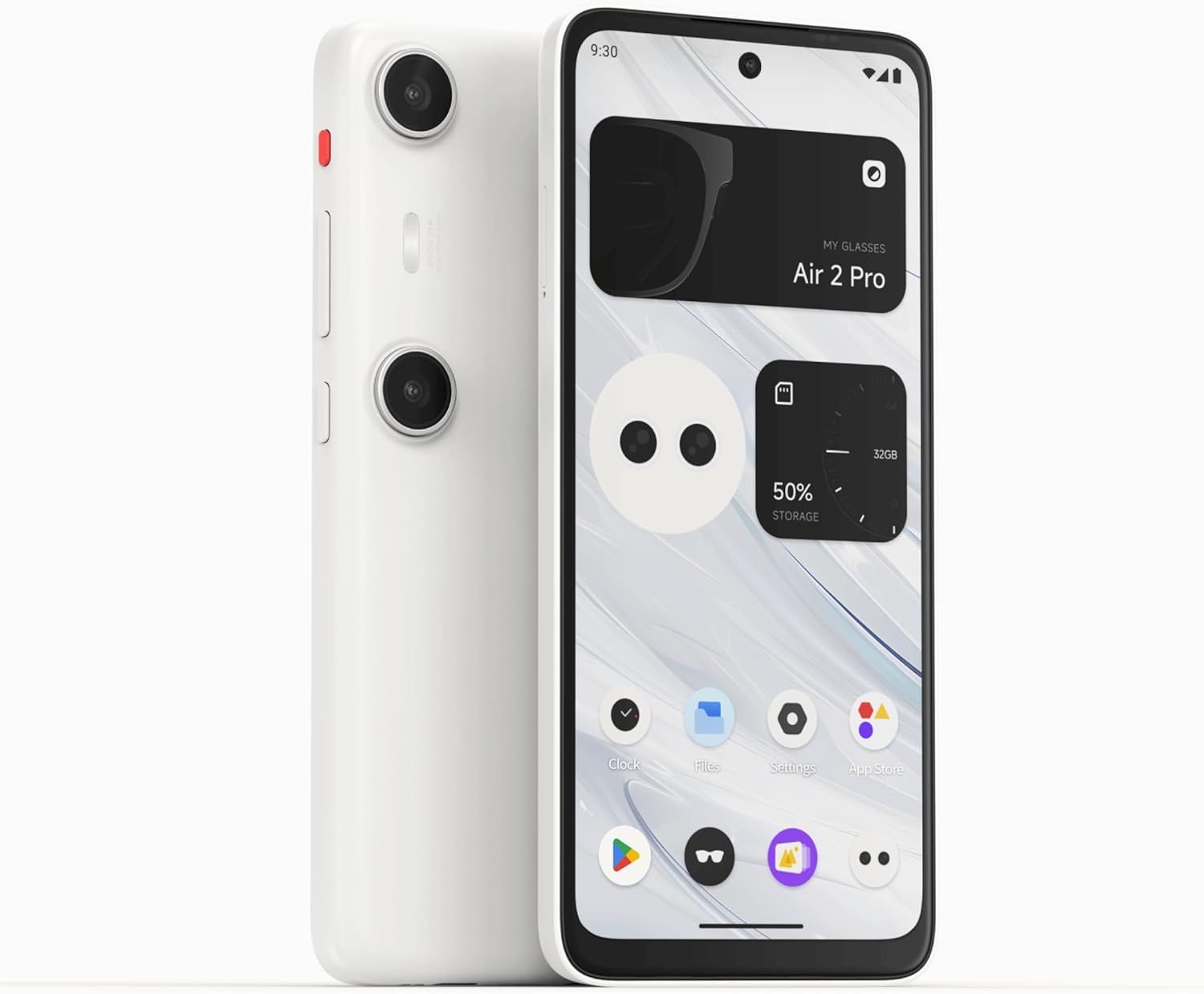

XREAL Beam Pro
The XREAL Beam Pro is a spatial computer that looks just like an Android phone. Once paired with a pair of XREAL AR glasses, the Beam Pro provides an excellent way to stream media, play games, and even do distraction-free productive work. Two cameras on the back also enable the Beam Pro to capture 3D photos and video.
